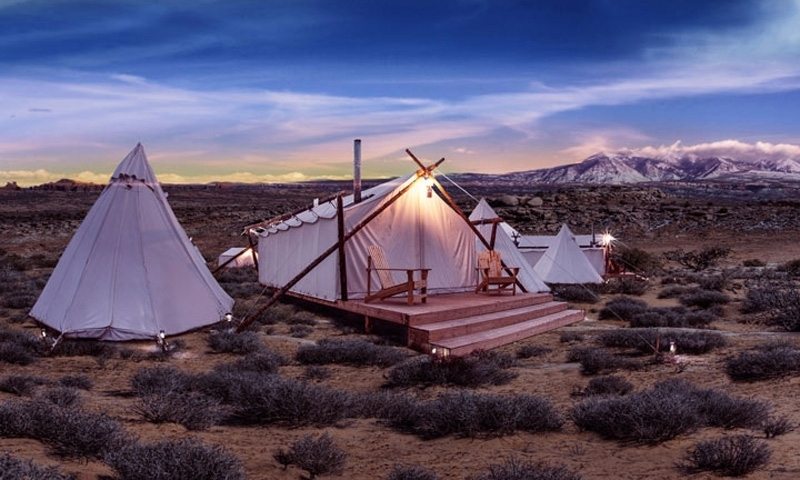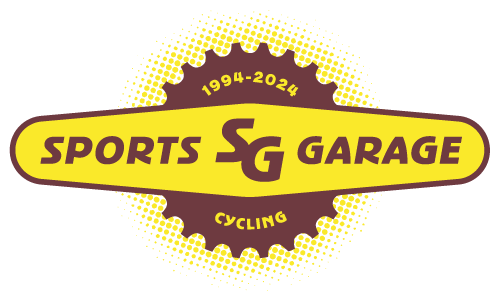
If you’re a mountain biker whose local trails (and fingertips) turn to ice in the winter, plug ‘Moab, Utah’ into your favorite weather forecasting app and check often. Even though the slickrock playground is known for its early start to spring and extended sun-drenched autumn, the locals whisper about November – March (psst – it’s still rideable). The other best thing about mountain biking Moab (if anything can top its inviting climate and otherworldly scenery) is the ability to choose-your-own-adventure in where to eat, sleep, and – of course – ride. We’ve got you covered.
Getting There
Moab is about a 6 hour drive from the Denver International Airport, a 4 hour drive from the Salt Lake City International Airport, and a 2 hour drive from the Grand Junction Regional Airport. If you’re driving in from the East, check out Utah State Highway 128, off the Cisco exit on I-70. Commonly called the “River Road,” this ribbon of pavement is puny compared to the scenery on either side. Stop along the Colorado River to have a picnic at one of the campgrounds or day use areas, or stretch your legs on the trail to Fisher Towers. If someone in your car is feeling spry, drop them off where the paved Moab Canyon bike path begins and they can pedal the last 4 miles to town.
Riding
OK, first with a little bubble bursting: Moab has more trails than you likely have time. But, with the right bike (Our team recommends a mid-travel full suspension rig like a Pivot Switchblade a Juliana Furtado , or several other desert-worthy machines in our demo fleet) a bit of planning, a good night’s sleep and lots of healthy eats (see below), you can definitely maximize trail time.
Sometimes it’s best to ease into your Moab MTB experience; the Moab Brand trails off of HWY 191 are a good place to start. The ‘Brand’ trails are ranked using the ski industry green/blue/black level of difficulty rating system, which allows you to make a parking lot decision of what to ride depending on how you’re feeling. The Klondike Bluffs trail system, north of there , also has some less technical riding (although it’s there if you want it) with both singletrack and slickrock.
Then, there are the classics. Slickrock, an 11 mile ride through a lunar landscape, will have you whooping as you swoop through the petrified sand dunes. Your experience will be enhanced by good, grippy tires. Oh, and try to hit Slickrock at sunrise or sunset for even better breathtaking vistas. The other ‘must ride’ in Moab is Porcupine Rim, an athletic romp down slickrock slabs, old 4×4 roads, and high exposure singletrack. Depending on the weather, you can extend your Porcupine ride by adding UPS and LPS at the top. There are two options for accessing Porcupine Rim: you can ride up Sand Flats Road (a 16 mile, 3700’ climb) or hire a shuttle to drop you at the top.
Now you’re ready for the crown jewels. The Amasa Back area trails, which includes Captain Ahab, Hymasa, Jackson’s, and Rockstacker, deserve at least a few hours, if not all day. Riders used to have to share the 4×4 routes with motorized vehicles, but the purpose build Ahab and Hymasa trails speak our language. Challenging, technical sections beg for session’ing, and slabby drops are too fun to slow down on. Similarly, the Magnificent “Mag” 7 trails also showcase Moab’s commitment to building trails that are both challenging but accessible and that can be ridden as all-day epics (Mag 7 is most often done as a 20-mile point to point shuttle ride) or bitten off in smaller chunks. It goes without saying (but we have to say it anyway) that the views from Amasa Back and the Mag 7 are mind-blowing. Shuttles for Porcupine Rim and Mag 7 can be coordinated through local bike shop Poison Spider.
Sleeping
Moab has a bed for every budget (and some of the best ones are free). The city’s airbnb.com listings offer accommodation in cabins, houses, condos, and RV’s, and hotels. Sorrel River Ranch, 12 miles out of town on aforementioned “River Road” has luxury options, while the Redstone Inn and Gonzo Inn are longstanding favorite mid-range options on Main Street. Moab Under Canvas offers ‘glamping’ in high end tents and yurts near the Moab Brand trail system.
If weather permits, sleeping under the star-studded sky is the way to go. Moab boasts thousands of campsites, from primitive areas on BLM land with no amenities to sites with pit toilets, picnic tables, and fire rings. Sand Flats Road Recreation Area (home to the famed Slickrock Trail) is close to town with over 120 campsites. In the winter, you’re likely to have the pick of the litter (which, in our opinion are the sites nestled beneath big, blonde, sandstone boulders on the north side of the road). There are first come, first serve BLM campsites along Highways 128, 279, 313, and Kane Creek Road. Fill your water jugs (no potable agua at those locations) at Gearheads in town (and get some 0.99$ Clif Bars while you’re at it!). If you want to camp but are worried about post-ride sweaty and stinkiness, the Moab Recreation Center offers warm $5 showers.
Eating
Like sleeping, eating in Moab can be a dirtbag or decadent affair. For firing up the Coleman stove at your campsite, visit City Market or the Moonflower Community Cooperative for groceries. If you’re more in the mood for candlelight than moonlight, check out the Desert Bistro. The only required eating in Moab is a burger (sub veggie burger, grilled cheese, or avocado melt), fries, and shake at Milt’s Stop & Eat and a breakfast burrito and coffee at the Love Muffin. Just go, we won’t even say ‘told ya so.’
